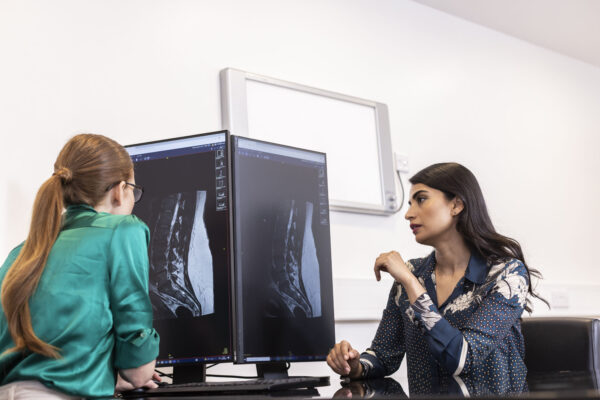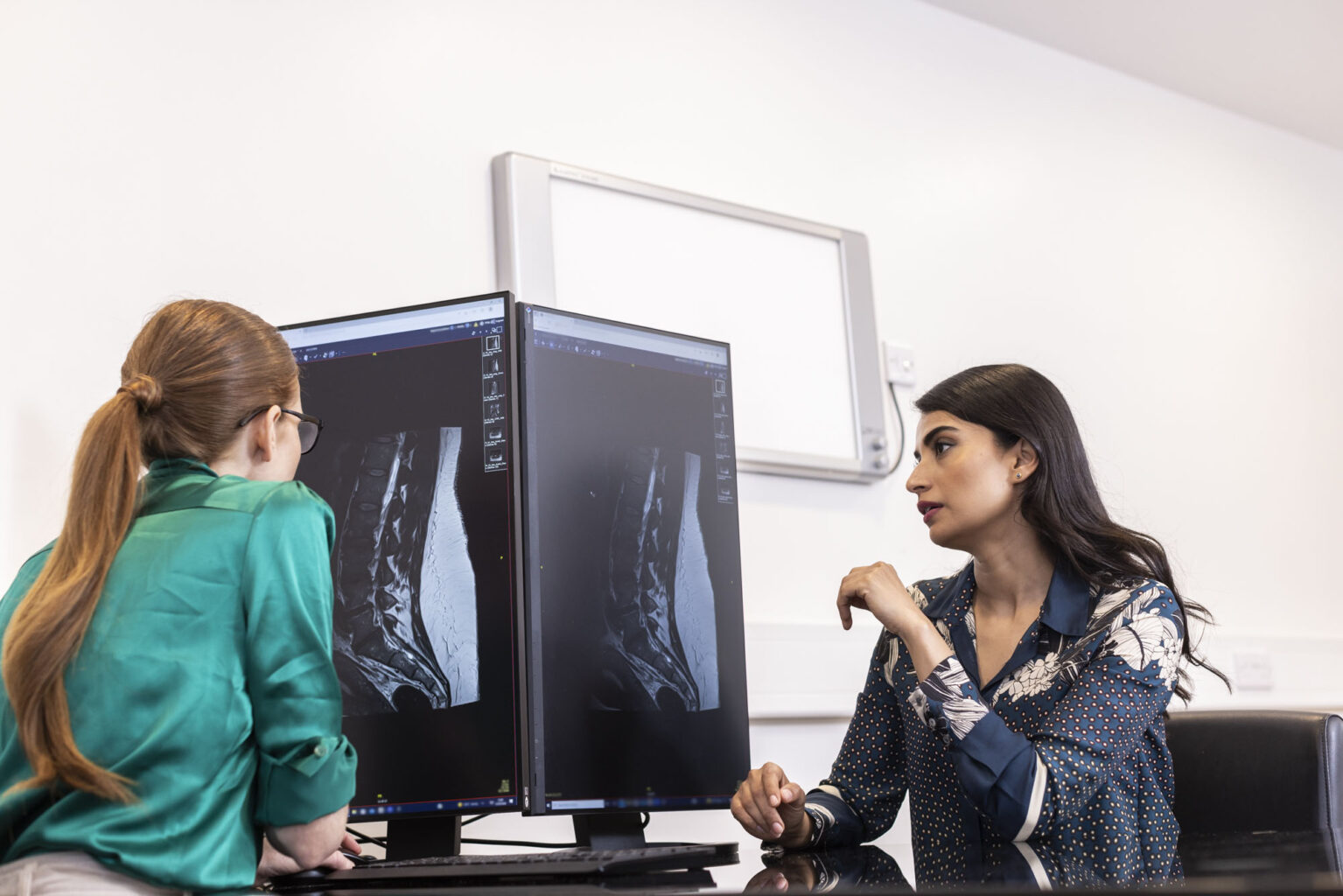Contact number: 020 7806 4060
What is an Epiduroplasty?
Epiduroplasty, also known as epidural pain-relief injection, is a minimally invasive procedure designed to diagnose and treat chronic back pain. It involves inserting a catheter (a soft hollow tube) with a camera into your spine so your doctor can see the nerves and tissues and diagnose the cause of your back pain. With the help of real-time X-ray vision, your specialist can then inject medication to dissolve any scar tissue around the nerves. By removing this tissue, pressure on the nerves is alleviated and painkillers can also reach the nerves more easily.
An Epiduroplasty is often performed on an outpatient basis, which means you can be treated and go home the same day. It is typically done when more conservative treatments, such as physiotherapy, have not provided sufficient pain relief. The goal of an epiduroplasty is to reduce your pain and so improve your quality of life, by reducing the pressure on the spinal nerves, and delivering pain relief directly to the affected area of your spine.
Back pain injections at St John & St Elizabeth Hospital
At St John & St Elizabeth Hospital, this advanced procedure is carried out by leading spinal specialists in our state-of-the-art facilities. This treatment delivers targeted relief using real-time imaging for precision and safety. With minimal recovery time and proven results, epiduroplasty can help restore mobility, reduce reliance on medication, and improve your quality of life — all in the comfort of one of London’s leading private hospitals.
How to pay for your treatment
If you’re… paying for yourself
Did you know you don’t need private medical insurance to come to St John & St Elizabeth Hospital? As a self-pay patient, you can access safe, outstanding quality health care at times to suit you.
For scans and tests, as well as to see most consultants, you’ll still need to be referred by a medical professional like your GP, but as a self-pay patient, the process is more straightforward. You won’t need authorisation from an insurance provider, and you’ll have greater choice of consultant and appointment times.
If you’re… insured
St John & St Elizabeth Hospital is approved by all major medical insurance companies. If you have a personal private health insurance policy, or your company provide it for you, you can use it to pay for your care from your initial consultation through to treatment, surgery and aftercare such as physiotherapy. Not all private health insurance plans cover the same things. It’s very important to check exactly what you are covered for with your insurance provider.
Frequently Asked Questions About Epidural Injections
St John & St Elizabeth Hospital is located in St John’s Wood (NW8), a well-connected area of North West London. We are conveniently accessible for patients from Hampstead (NW3), Kilburn (NW6), and beyond.
By Tube:
- St John’s Wood station (Jubilee Line) is just a 5-minute walk from the hospital.
- Finchley Road (NW3) and Kilburn stations (NW6) on the Jubilee Line provide excellent connections.
By Bus:
- Wellington Road: Routes 13, 46, 82, and 113 stop near St John’s Wood Underground Station, just a short walk from the hospital.
- Circus Road: Routes 46 and 187 stop close to the hospital’s Circus Road entrance.
- Abbey Road: Routes 139 and 189 stop near the junction where Grove End Road becomes Abbey Road, providing easy access.
Major Roads:
If you’re travelling from NW3 or NW6, major routes such as Finchley Road or Kilburn High Road offer a direct approach to the hospital.
You may feel a tingling sensation during the initial testing and some pressure during the injection, but the area will be numbed with local anaesthetic. After the procedure, your legs may feel heavy or numb for a few hours. Some soreness at the treatment site is normal once the anaesthetic wears off, but this typically settles within a few days with rest and gentle movement.
You must stop eating at least six hours before your procedure and stop drinking, including water, two hours before. On the day, wear loose, comfortable clothing and ensure someone is available to collect you afterwards, as you won’t be able to drive. When you arrive, a nurse will check your vital signs and review your medical history. Your doctor will go over the procedure again and ask you to sign a consent form before you begin.
The procedure takes place in our imaging department and is performed using real-time X-ray (fluoroscopy) guidance. You’ll lie on your front, and a small current may be applied to identify the exact area needing treatment, which may cause a tingling sensation. Once confirmed, a local anaesthetic is used to numb the area, and a catheter is inserted into the epidural space of your spinal canal. Medication, including anaesthetic and anti-inflammatory steroids, is delivered to reduce inflammation and relieve pain. Special tools may also be used to break up scar tissue or adhesions.
You’ll be taken to a private room to recover and have something to eat. Your vital signs will be monitored, and once you’ve eaten and we’re happy with your recovery, you can go home. You must have someone collect you, as you will not be able to drive. You’ll be given antibiotics to take over the following days to help prevent infection.
Pain relief is not always immediate. Most people start to feel a reduction in their pain within a month, and by three months, many experience complete relief with improved mobility. Rest, combined with light exercise as advised, will support your recovery.


